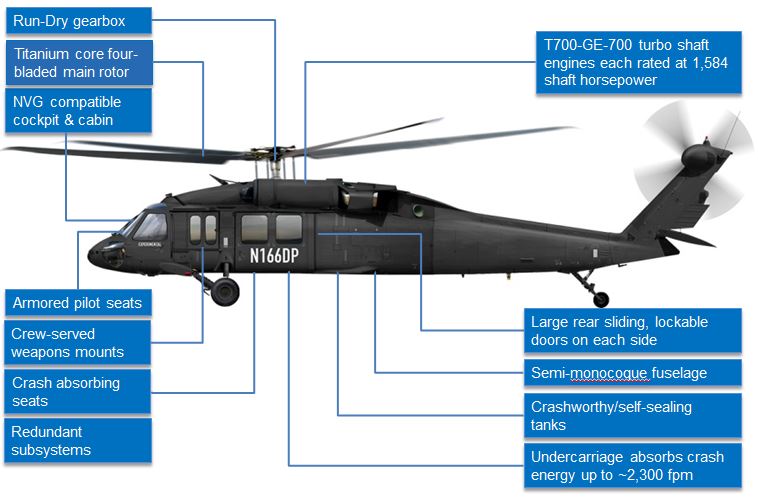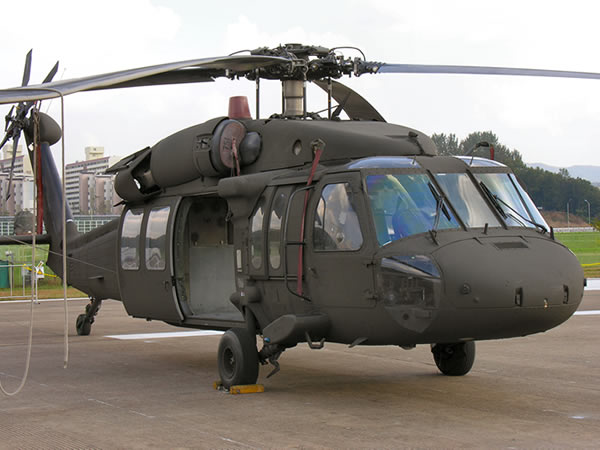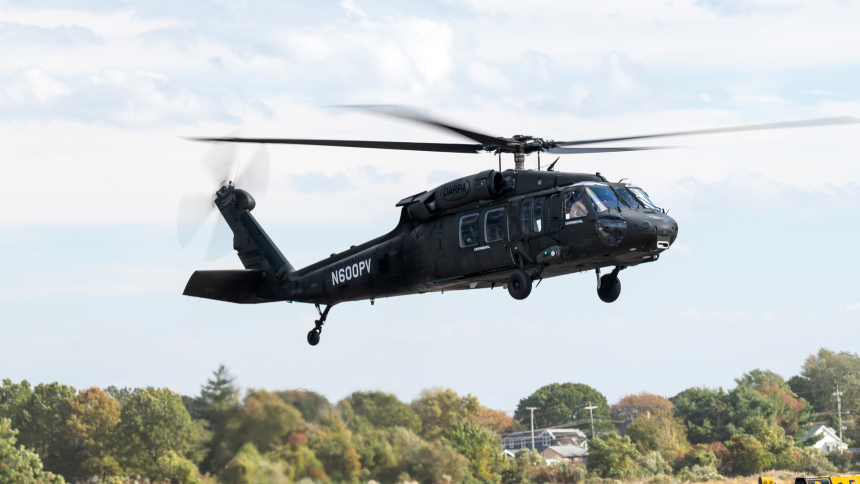The Role of the UH 60 in Combat Zones: Enhancing Mobility and Operational Efficiency
The Role of the UH 60 in Combat Zones: Enhancing Mobility and Operational Efficiency
Blog Article
Exploring the Background and Development of the UH 60 Helicopter

Beginnings of the UH-60
The beginnings of the UH-60 helicopter can be mapped back to the late 1960s, a duration noted by the requirement for a functional energy aircraft that can adapt to the advancing demands of modern war. The U.S. Military recognized the need for a substitute for the older UH-1 Iroquois, which was ending up being progressively insufficient for the complexities of modern fight situations. In 1967, the Military initiated the Energy Tactical Transportation Aircraft System (UTTAS) program, which looked for to establish a multi-role helicopter qualified of different objectives, including army transportation, medical emptying, and logistical assistance.
The UH-60 Black Hawk was presented, showcasing innovative layout elements and progressed innovation that established it apart from its precursors. The UH-60 swiftly gained recognition for its robust efficiency, reliability, and versatility, leading the way for its substantial use in military procedures and strengthening its standing as a cornerstone of United state Army air travel.
Secret Style Features
Innovative layout features of the UH-60 Black Hawk considerably add to its functional effectiveness. One of the most notable elements is its twin-engine arrangement, which boosts reliability and provides a greater power-to-weight proportion, enabling the helicopter to perform under numerous conditions. The airplane's four-blade major rotor system supplies boosted lift and ability to move, essential for tactical objectives.

In addition, the cockpit is made for ideal presence and functional designs, including advanced avionics that simplify pilot operations. The modular design of the UH-60 permits very easy upkeep and adaptability, making it suitable for various objective profiles, from troop transport to medevac operations. These crucial layout functions ensure that the UH-60 Black Hawk stays a functional and dependable property in military aeronautics, capable of satisfying the needs of modern-day war.
Technological Innovations
Recent technical advancements in the UH-60 Black Hawk have significantly boosted its operational abilities and convenience. The combination of advanced avionics, such as digital flight control systems and boosted situational recognition display screens, allows pilots to run with increased accuracy and efficiency. These systems facilitate enhanced navigating, interaction, and data sharing, making it possible for the helicopter to work efficiently in diverse settings.
Furthermore, the introduction of composite materials has lowered the total weight of the airplane while maintaining architectural honesty. This reduction enhances fuel effectiveness and extends operational range. The consolidation of sophisticated rotor modern technology, including using four-blade, fully articulated rotor systems, has enhanced lift performance and maneuverability, permitting much better handling in different trip problems.

Furthermore, improvements in propulsion systems, such as the T700-GE-701D engines, have actually raised power outcome and dependability - uh 60. These engines add to exceptional performance in high-altitude and hot-weather conditions
Finally, the integration of self-defense systems and boosted sensor plans boosts the Black Hawk's survivability and mission efficiency. Collectively, these technological improvements ensure that the UH-60 Black Hawk stays an important asset in modern air travel, with the ability of adjusting to the progressing site here demands of armed forces and humanitarian missions.
Function in Armed Force Workflow
As the foundation of united state Army aviation, the UH-60 helicopter plays an essential role in different armed forces operations, working as a functional system for fight assistance, transportation, and medevac objectives - uh 60. Its style incorporates the ability to operate in varied settings, making it necessary for troop activity and logistical assistance in both unconventional and traditional warfare

In clinical emptying scenarios, the UH-60 has actually shown very useful, significantly lowering the time to transfer injured soldiers from the battleground to clinical facilities. Its innovative avionics and evening vision capabilities further guarantee goal success under challenging conditions. Overall, the UH-60 helicopter remains an essential asset, continually adjusting to fulfill the developing needs of military procedures and enhancing the effectiveness of U.S. forces worldwide.
Future of the UH-60
Looking ahead, the future of the UH-60 helicopter includes substantial developments in technology and capacities created to boost its operational performance. As military procedures evolve, the UH-60 is anticipated to integrate cutting-edge innovations, including boosted avionics, boosted weapons systems, and advanced interaction devices. These improvements will certainly permit greater situational understanding and goal versatility, making sure that the UH-60 stays an important asset on the field of battle.
One noteworthy development is the integration of fly-by-wire systems, which will certainly enhance flight control precision and minimize pilot work. Efforts to update the airframe and engines aim to enhance speed, range, and haul capability, thereby increasing the helicopter's operational extent.
The future also holds assurance for increased interoperability with unmanned aerial systems (UAS), enabling coordinated objectives that utilize both manned and unmanned abilities. Additionally, the consolidation of expert system and artificial intelligence could maximize flight characteristics resource and upkeep processes, bring about minimized operational costs.
Final Thought
The UH-60 Black Hawk helicopter stands for a considerable achievement in military aeronautics, advancing from the united state Military's first demands for a versatile utility aircraft. Its ingenious design features and continual technological innovations have actually ensured its importance in numerous military operations over the decades. As the demands of modern-day warfare adjustment, the future of the UH-60 will likely involve more enhancements and adjustments, strengthening its standing as an important asset for armed forces worldwide.
The UH-60 Black Hawk helicopter represents a significant turning point in armed forces air travel, arising from the U.S. Army's mission for a more functional and trusted energy airplane in the late 20th century.The origins of the UH-60 helicopter can be mapped back to the late 1960s, a period noted by the need for a functional energy aircraft that might adapt to the evolving demands of contemporary warfare. In general, the UH-60 helicopter continues to be an important property, continuously adjusting to fulfill the advancing demands of army operations and boosting the performance of U.S. forces worldwide.
Looking ahead, the future of the UH-60 helicopter includes considerable innovations in innovation and capacities created to improve its operational efficiency.The UH-60 Black Hawk helicopter represents a significant achievement in military aeronautics, evolving from the U.S. Military's first needs for a next flexible utility aircraft.
Report this page